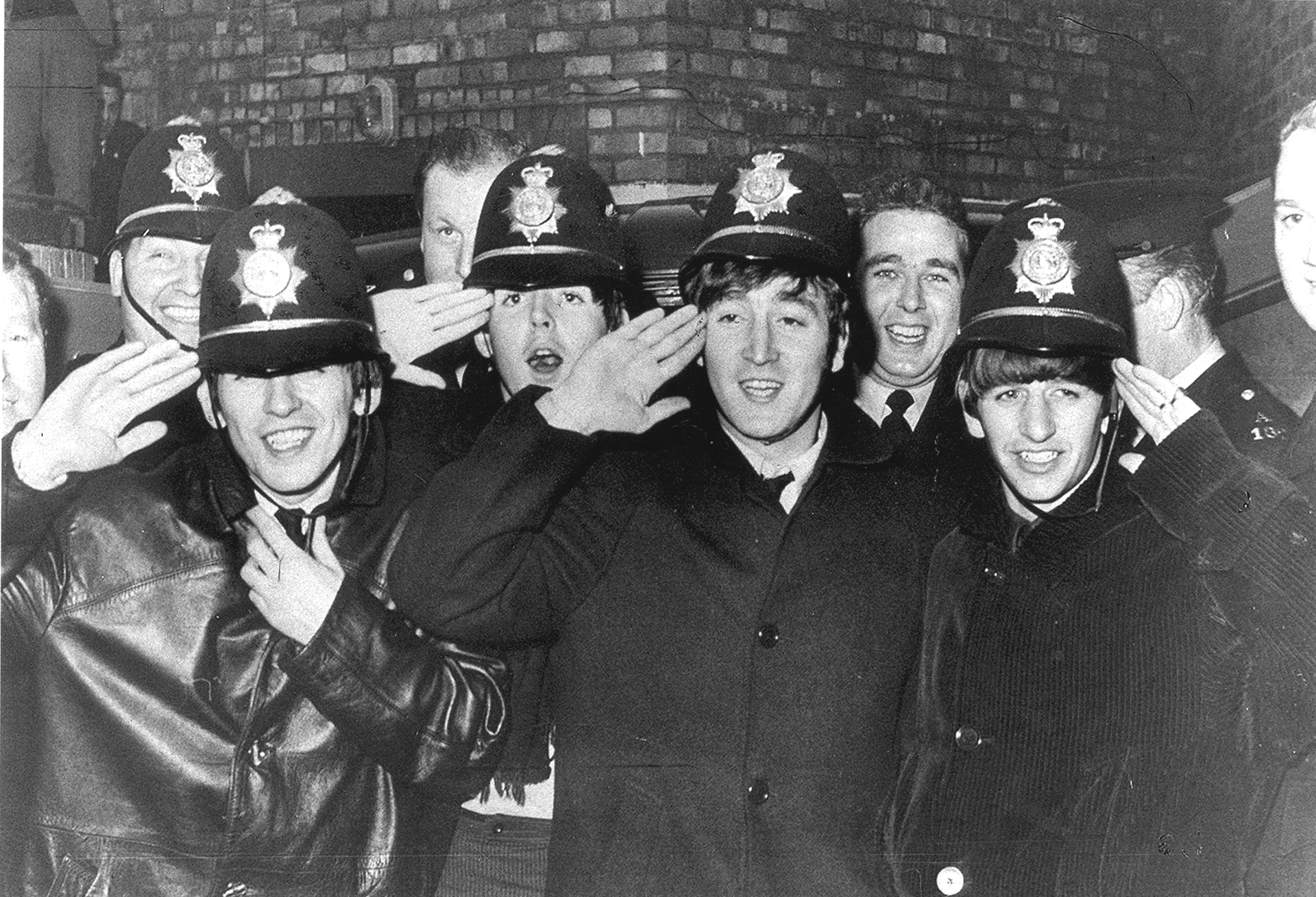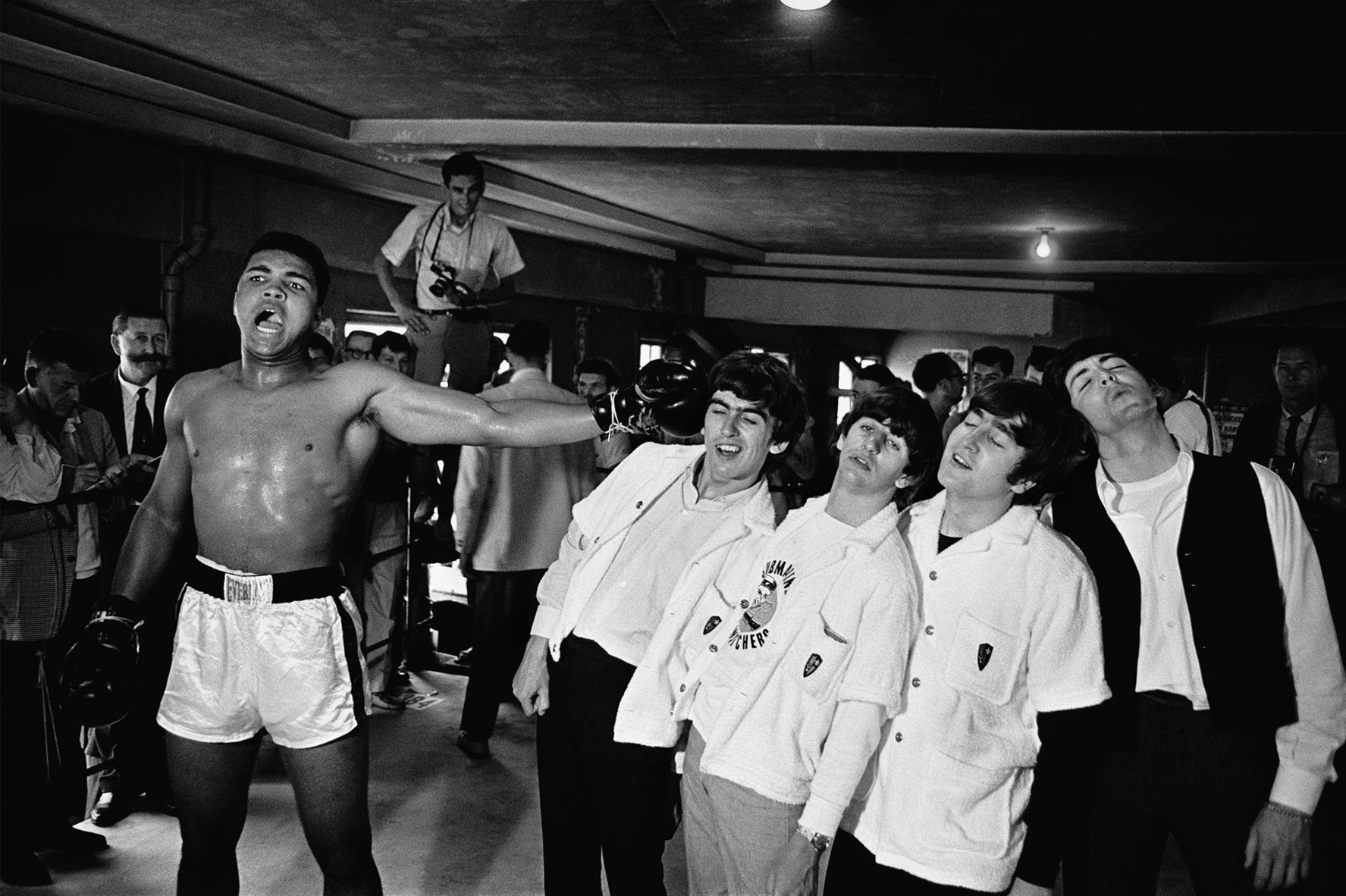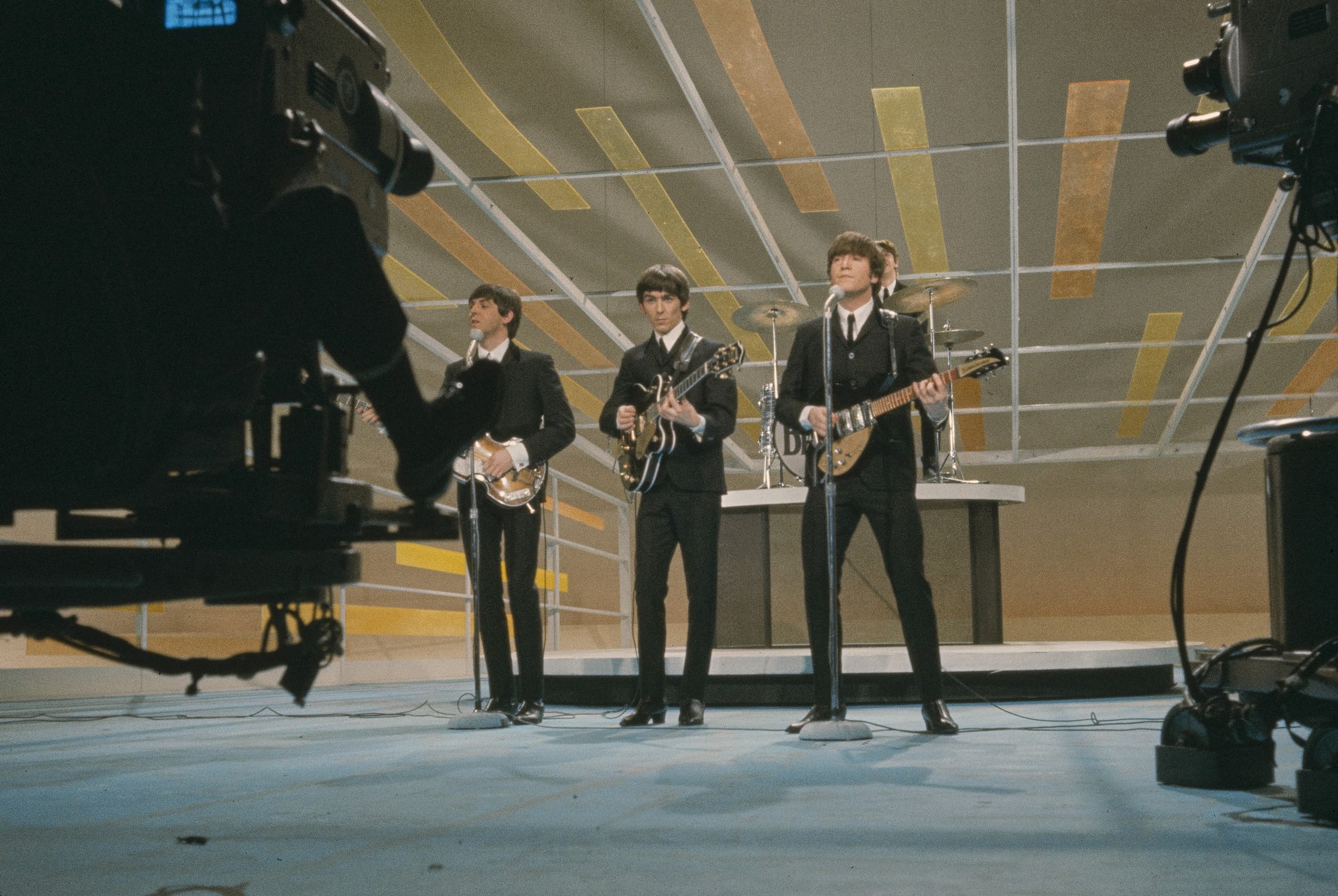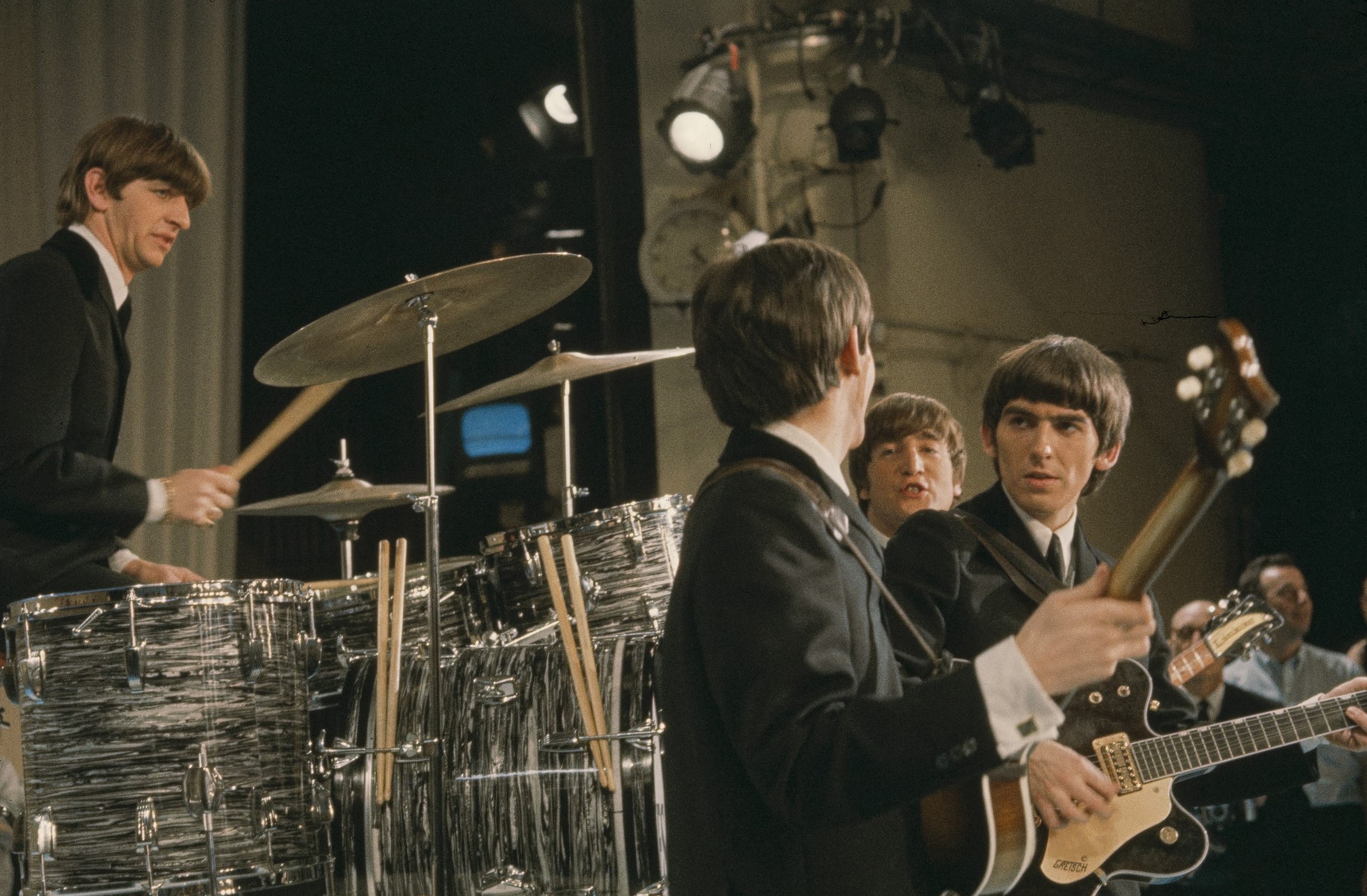“I Want to Hold Your Hand” by the Beatles was released in the United States on December 26, 1963, and in short order became that group’s first number-one single in the U.S.

It all seems so quaint now: Lennon and McCartney harmonizing the sweet-as-pie vocal part to that upbeat tune, the uniform mop tops and the matching suits, the way girls in every crowd relentlessly screamed at the sight of them.
Still to come were the increasingly more abstract and innovative compositions, the abrupt withdrawal from touring, the aesthetic reverberations of exposure to psychedelic substances, and their pioneering approach to the studio album as an integral work of recording art.
But the arrival of “I Want to Hold Your Hand” marked a breakthrough from which all the rest necessarily followed.
“Beatlemania” was already underway in the United Kingdom. Across the Atlantic, however, the Beatles had yet to make a noteworthy impression. Their three previous singles released in the United States sold unimpressively and were given little airplay despite each having first registered as number-one hits for the band on the British charts.

It was, of course, not helpful that executives at Capitol Records, their distributor’s American subsidiary, passed on issuing anything by the Beatles until “I Want to Hold Your Hand.” As a result, smaller labels with lesser promotional capacity claimed the commercial rights to their earlier recordings.
Then, in the final month of 1963, came the sudden and profound success of “I Want to Hold Your Hand” in the United States. Capitol Records successfully lobbied to distribute the Beatles in the U.S. itself, initially scheduling the track for release in mid-January 1964.
Then plans changed. On December 10, the evening news with Walter Cronkite carried a feature on British Beatlemania. The segment prompted a letter from one teenaged viewer, which convinced its recipient, disc jockey Carroll James of WWDC 1260 AM in the nation’s capital, to have a copy of the latest by the Beatles overnighted from Britain.
James broadcast the song for the first time on December 17. The station received impressive listener response. Much the same followed airplay of tape copies made and sent by James to peers elsewhere in the country, and the single’s general release was rushed up to the day after Christmas 1963.

In the closing days of that year, the song reportedly sold more than a quarter of a million pressed-vinyl copies while production was hurriedly expanded to satisfy demand.
Thus began American Beatlemania. The Beatles themselves arrived soon after. Thousands of cheering fans waved the group goodbye early in the following February as the foursome took flight from London’s Heathrow Airport, bound for New York City, where thousands more gathered to greet them in much the same way.
The purpose of their travel was a brief concert tour of the eastern United States. The first date they made was a live performance on The Ed Sullivan Show. According to the Nielsen ratings, an unheard of 45.3% of all U.S. households possessing a television viewed the show.

The band closed with “I Want to Hold Your Hand,” which had reached the top of the Billboard Hot 100 a week earlier. When it was displaced from that position in mid-March, by the formerly undersold “She Loves You,” four of the top ten singles on the chart were by the Beatles.
For the week ending April 4, 1964, each of the top five on the Hot 100 were their recordings, as were seven further tracks ranging from the 31st to the 79th position. With summer came the release of A Hard Day’s Night, a feature-length hybrid comedy and concert film starring the Beatles as themselves, which opened to smash box office success and was accompanied by a top-selling album of the same title.
That the Beatles broke big in America amounts to more than mere trivia, not so much because they moved vinyl records and television dials, but because they moved a culture. For as much as the music obviously mattered, so too was society affected by their public personas.

They appeared on network television and in their very own movie, maintaining a decidedly irreverent disposition toward it all. They kept their hair longer than was prevailing custom for socially respectable men in the English-speaking world. The group made its presence known nearly everywhere, triggering scenes of pandemonium distinguished by the screams of their young female admirers.
While harmless in retrospect, their mere presence constituted a challenge to conventional propriety. Beatlemania was a popular phenomenon that, once begun, quickly grew into a force of social disorder. Beatlemania cleared the way for the flowering of imitative rock acts that gained fame in the mid-1960s.
Mainstream mass media promotion of the Beatles and their successors, among the earliest of whom were the Rolling Stones, yielded tremendous commercial success. In turn, it legitimated the expression of permissive and nonconformist attitudes in everyday American life.

With the enormous success that the American release of “I Want to Hold Your Hand” brought them, the Beatles reinvigorated the unruly art of rock ‘n’ roll, reshaping the bounds of acceptability in a fracturing culture
![]()
Learn More:
Frontani, Michael R. The Beatles: Image and the Media. Jackson: The University Press of Mississippi, 2007.
Spizer, Bruce. The Beatles are Coming!: The Birth of Beatlemania. Chicago: 498 Productions, Inc., 2003.
Greenberg, Steve. "How the Beatles Went Viral: Blunders, Technology & Luck Broke the Fab Four in America." Billboard (2014)
https://www.billboard.com/music/music-news/how-the-beatles-went-viral-in-america-1964-5894018/
Gilmore, Mikael. "Bob Dylan, the Beatles, and the Rock of the Sixties." Rolling Stone (1990).
https://www.rollingstone.com/feature/bob-dylan-the-beatles-and-the-rock-of-the-sixties-176221/amp/
Crandall, Bill. "CBS News Reports on the Beatles in 1963." CBS News (2014).
https://www.cbsnews.com/news/cbs-news-reports-on-the-beatles-in-1963/?ftag=CNM-00-10aab4i&_amp=1*s005rs*s_vid*S3VDQ2xONUZKRUc2ZUVHQjV4Wk41YlN0QVU1UUFOVGlOam9CekpLb0xSaURJd3gtYlloNmFxelV1VHNJRDBDZA..
Howard, Ron, dir. The Beatles: Eight Days a Week--The Touring Years. 2016.
Gilbert, James. A Cycle of Outrage: America’s Reaction to the Juvenile Delinquent in the 1950s. New York: Oxford University Press, 1986.
Cotkin, George. Feast of Excess: A Cultural History of the New Sensibility. New York: Oxford University Press, 2015.
